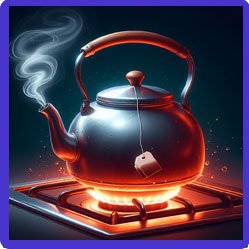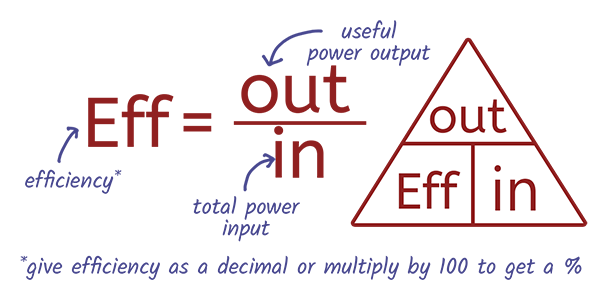
Heating
When things get heated up, energy moves from one place to another. For example, when you boil water on a stove, the heat from the stove transfers to the water, making it hot. This transfer of energy is like passing a "hot potato" from one object to another.
Equations on this page:
Efficiency
Practicals on this page:
Thermal Insulators and Specific Heat Capacity.
What is conduction and convection?
Conduction is a process where heat energy is transferred through a material or between materials that are in direct contact. Imagine you're holding a metal spoon in a hot bowl of soup. As the spoon touches the hot soup, heat energy flows from the soup to the spoon through direct contact. The particles in the spoon start to vibrate more vigorously, transferring heat energy to neighboring particles until the entire spoon becomes hot.
Convection is a process where heat energy is transferred through the movement of fluids (liquids or gases). An example of this is how air moves around a room when you use a heater. The heater warms the air near it, causing it to rise. As the warm air rises, cooler air moves in to take its place, creating a convection current that spreads heat around the room.
What is Lubrication and Insulation?
Lubrication is a process of reducing friction between surfaces that are in contact with each other. Friction is the force that opposes motion when two surfaces rub against each other. Lubricants are substances used to reduce this friction and make the surfaces slide more easily.
The chain on your bicycle needs lubrication to move smoothly and efficiently. Without lubrication, the chain would create a lot of friction against the gears, making it harder for you to pedal. Lubricants like oil or grease are applied to the chain to reduce friction, allowing it to move more freely.
Insulation is a material or substance used to prevent the transfer of heat, electricity, or sound. It acts as a barrier that slows down or blocks the flow of these forms of energy.
Imagine you're wearing a winter jacket on a cold day. The jacket has layers of insulation, such as down feathers or synthetic fibers, that trap heat close to your body and prevent it from escaping. This keeps you warm by reducing heat loss to the surrounding environment.
Similarly, in a house, insulation is added to walls, floors, and ceilings to keep the indoor temperature comfortable and to reduce energy costs by preventing heat from escaping during the winter or entering during the summer.
Reducing unwanted energy transfers
Both lubrication and insulation are ways to reduce the amount of energy that get transferred to un-useful stores. By implementing these methods, we can reduce energy wastage, improve efficiency, and conserve resources.
Key Words
Thermal conductivity - measure of how quickly energy is transferred through a material.
Convection currents - the cycle of warm air rising and cool air sinks.
Also see Energy,  Energy resources
EQUATION Efficiency
Efficiency measures the amount of energy wasted when transferred from one store to another. The less energy wasted the more efficient a device is. When the energy transferred is wasted we call this dissipated energy.
No device is 100% efficient as the energy is usually transferred to thermal energy stores. One exception of this is an electric heater because all of the energy is transferred to useful thermal energy stores.

PRACTICAL Thermal Insulators
Watch the video and have a go at writing out the steps of the practical.
PRACTICAL Specific Heat Capacity
Watch the video and have a go at writing out the steps of the practical.
Links for Learning
Bitesize: Energy and heating
Pass my exams: Heat Energy and Heat Transfer




